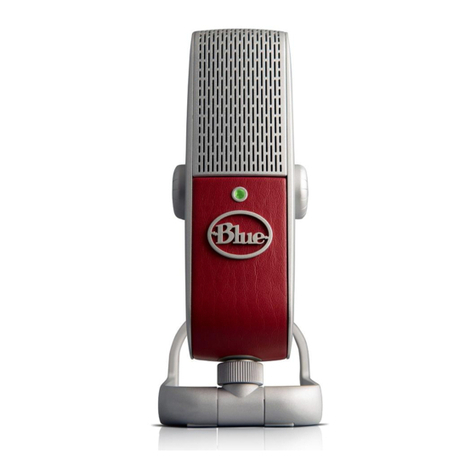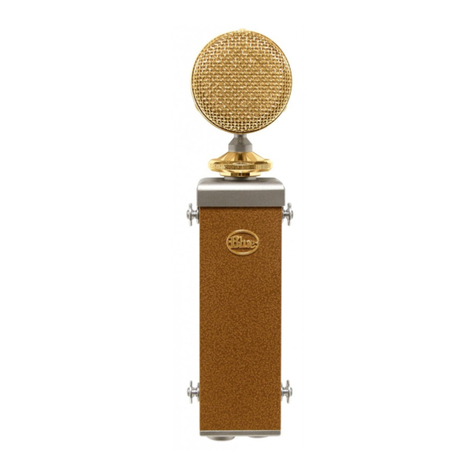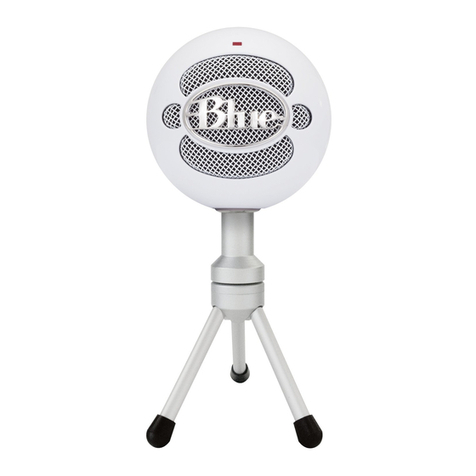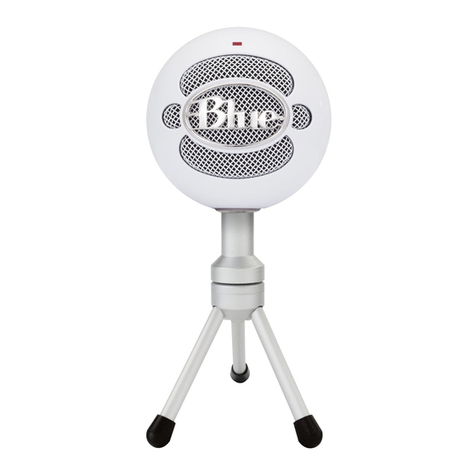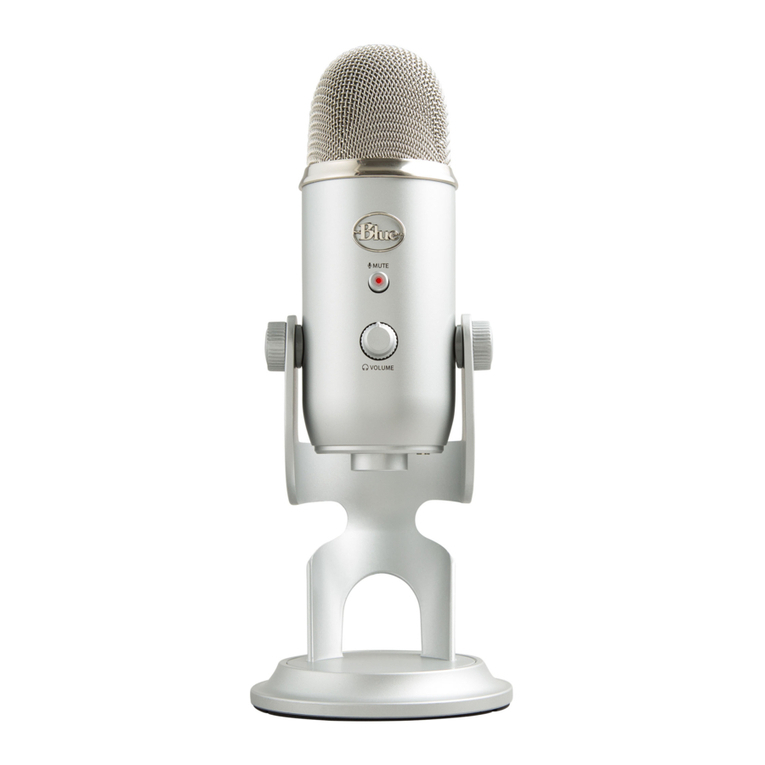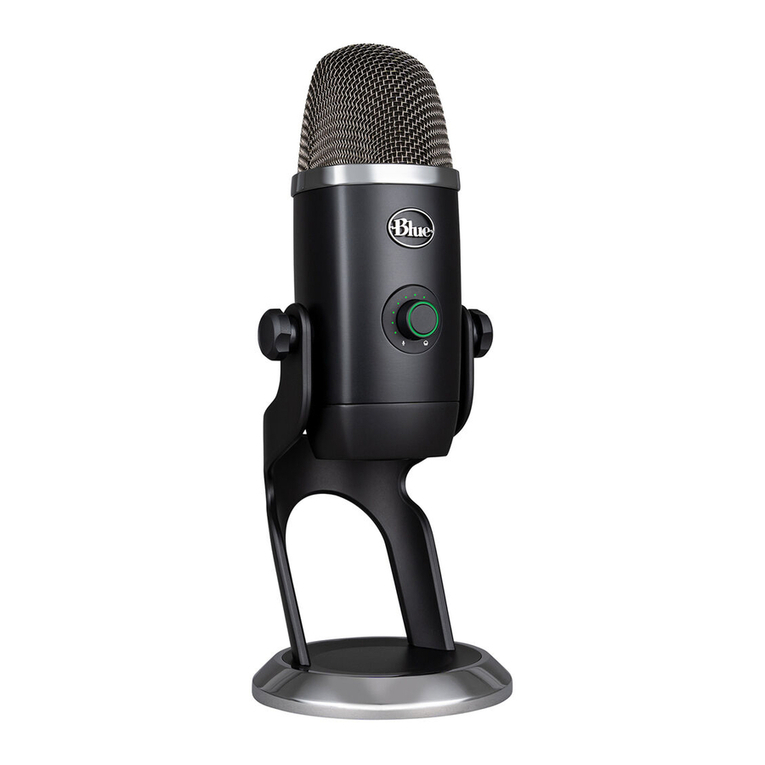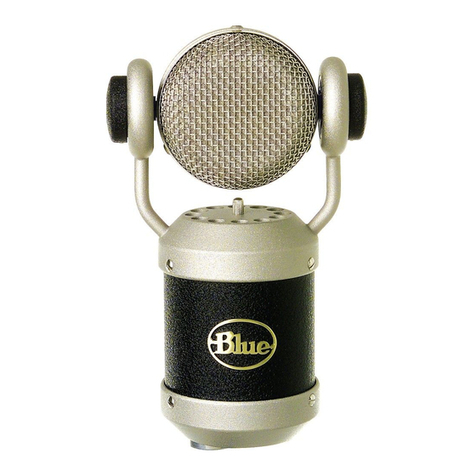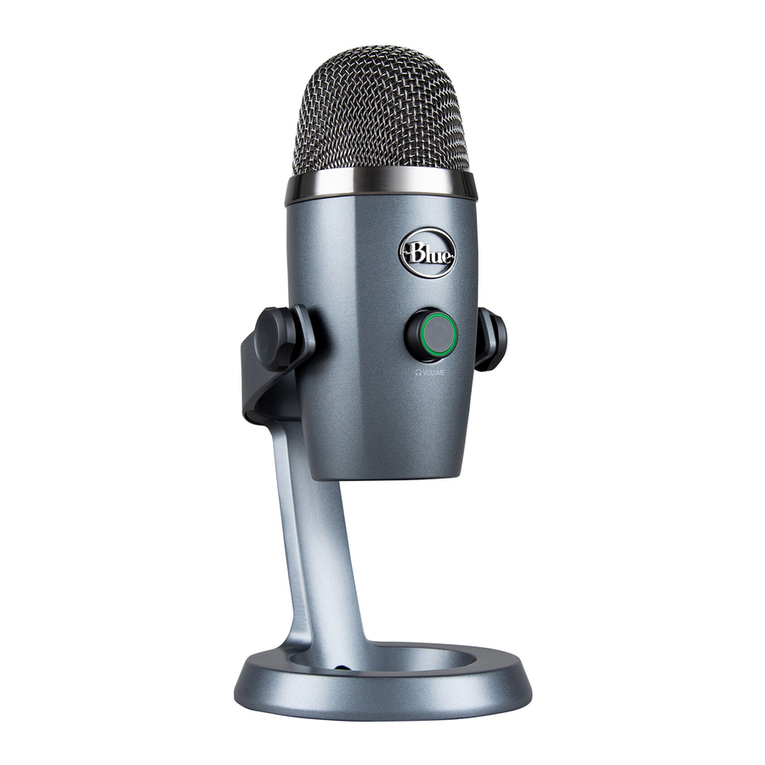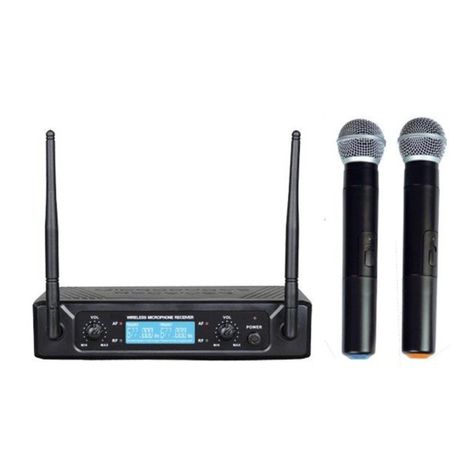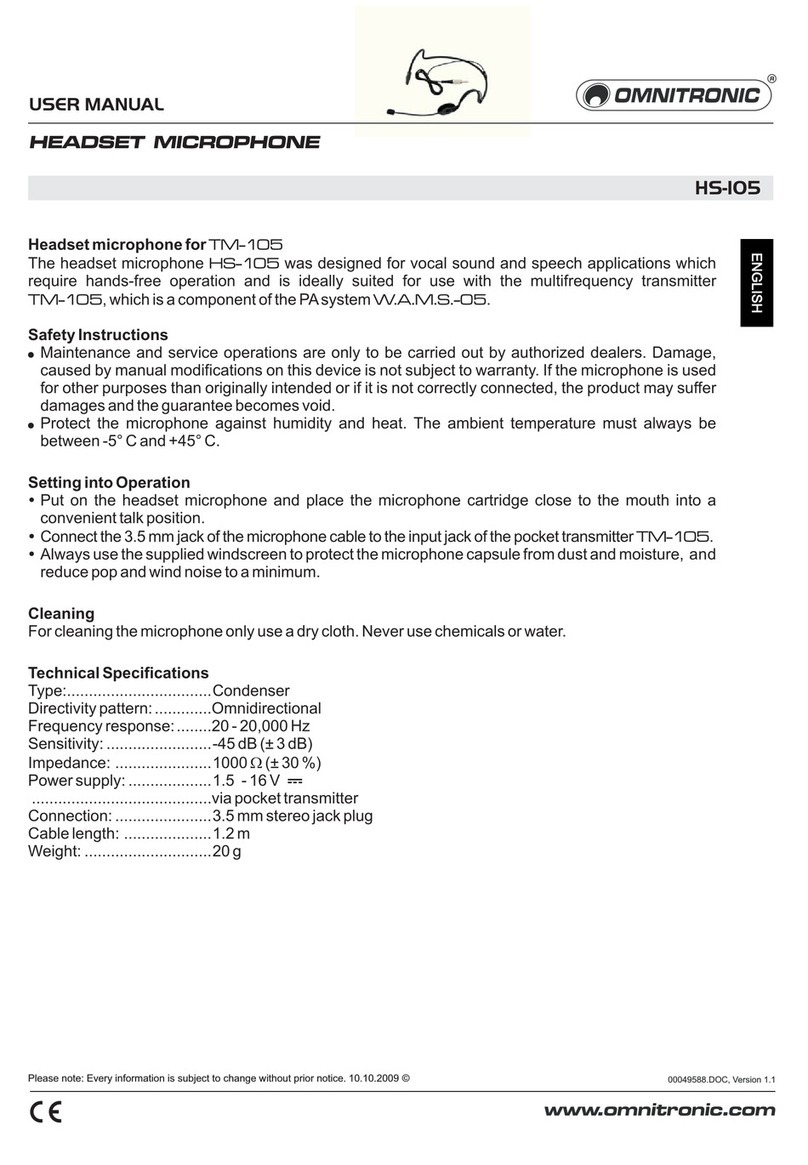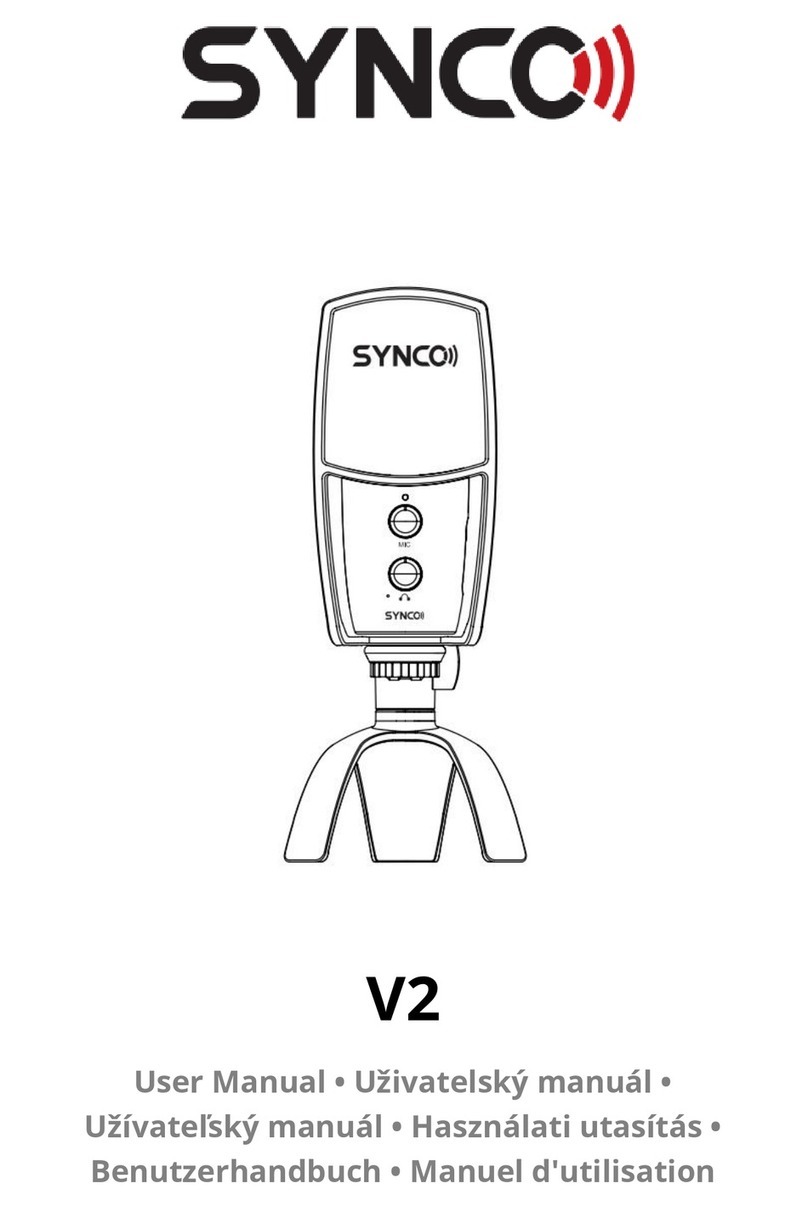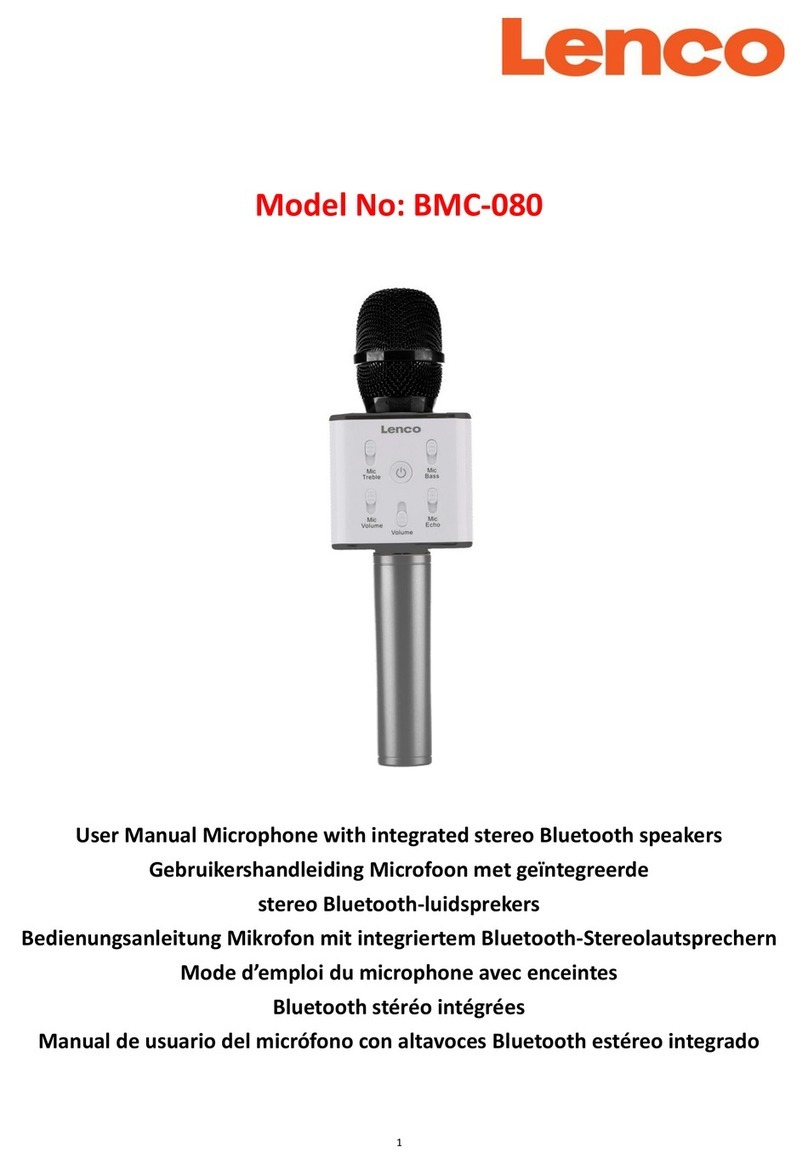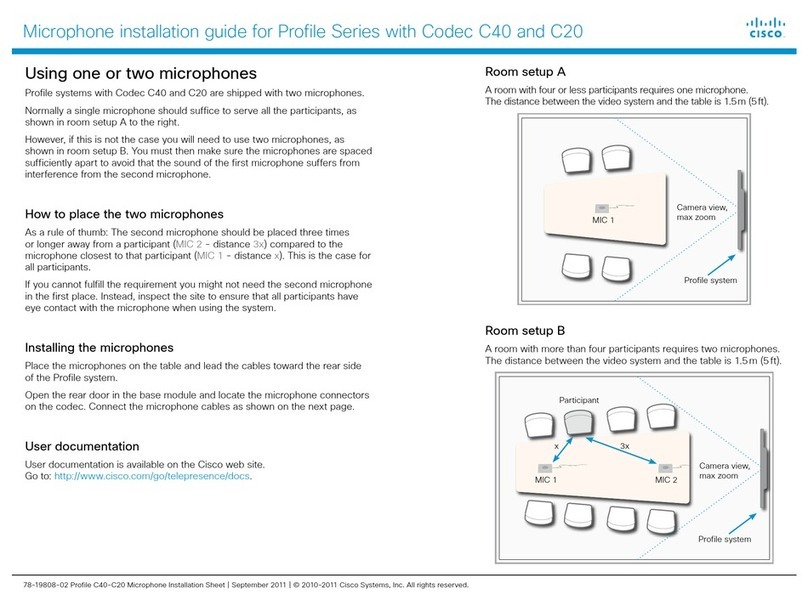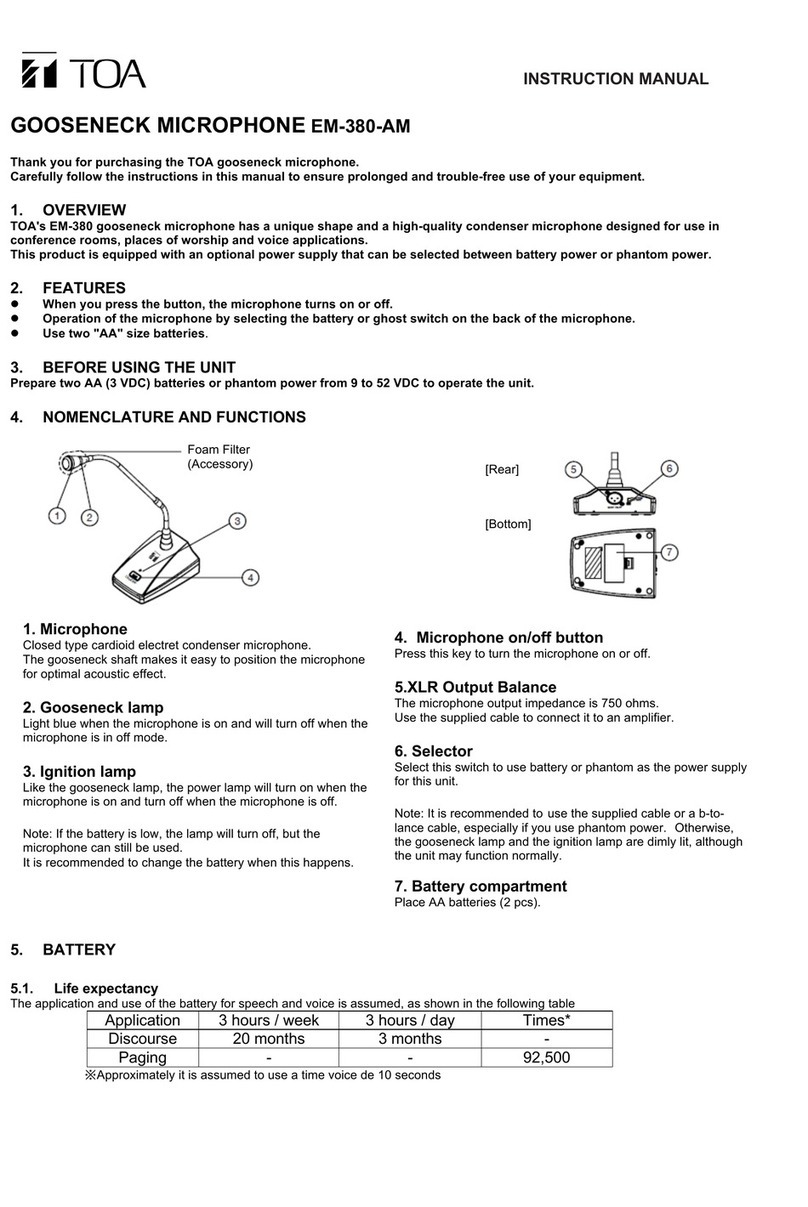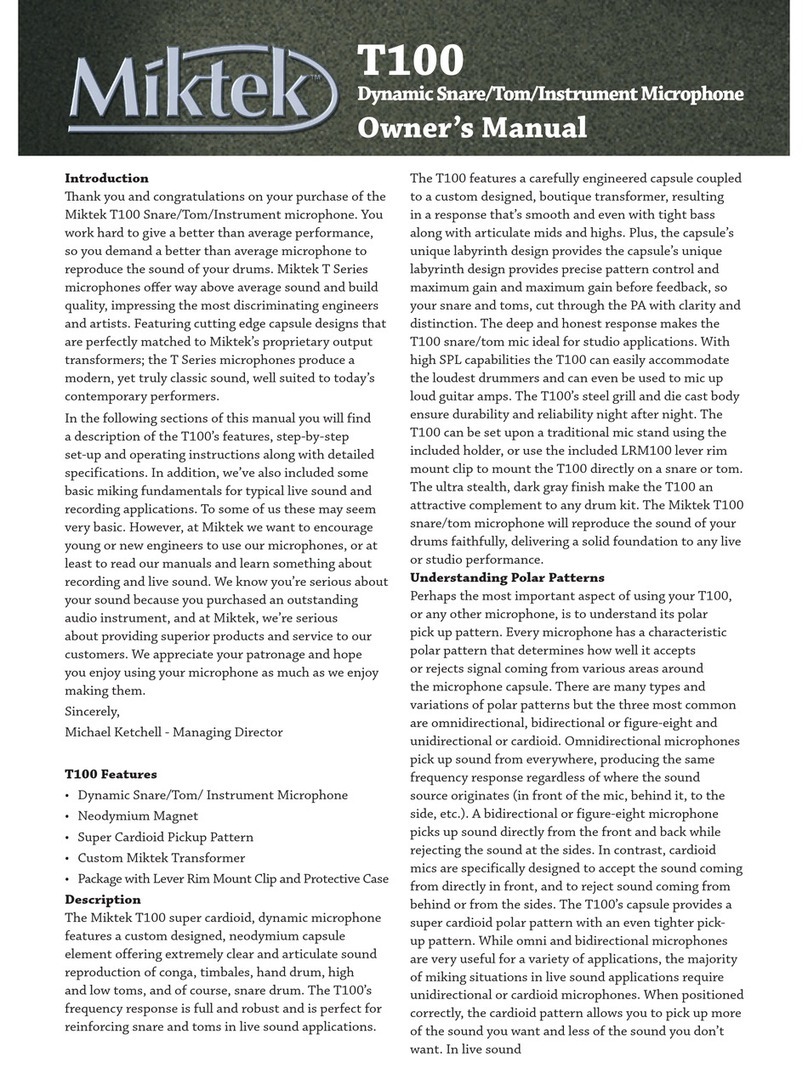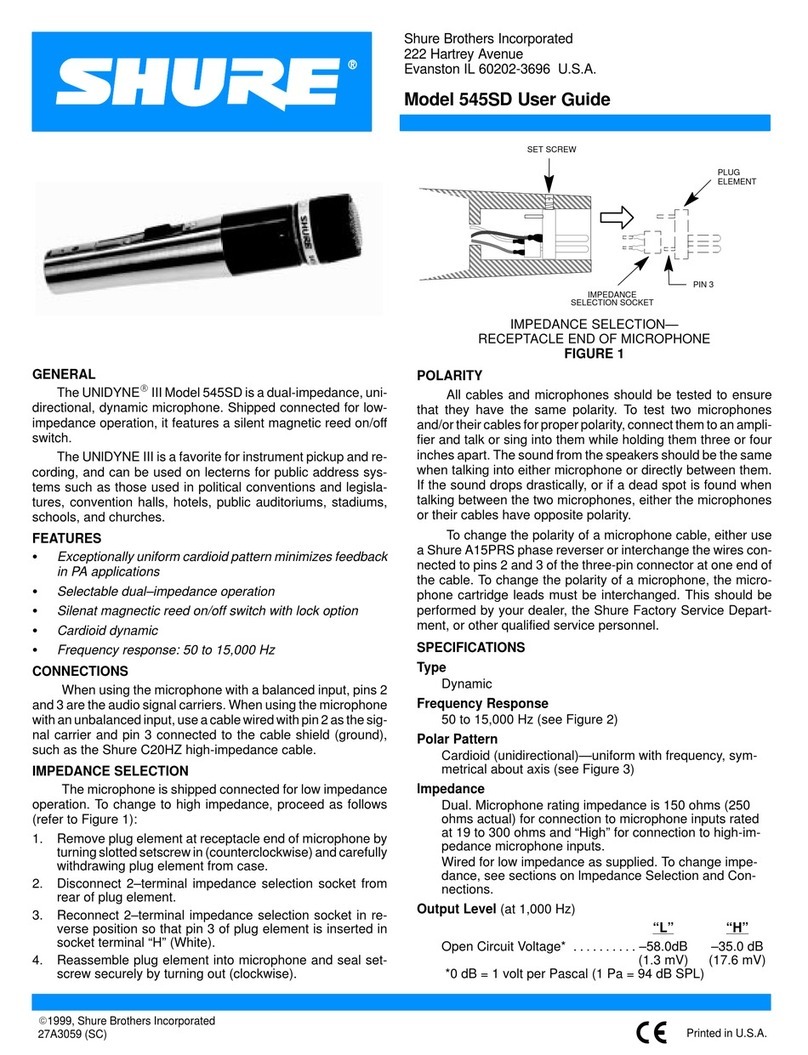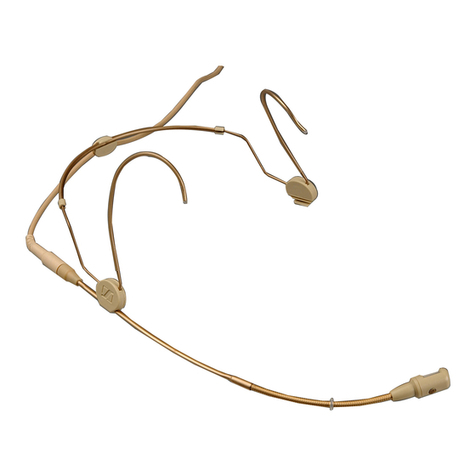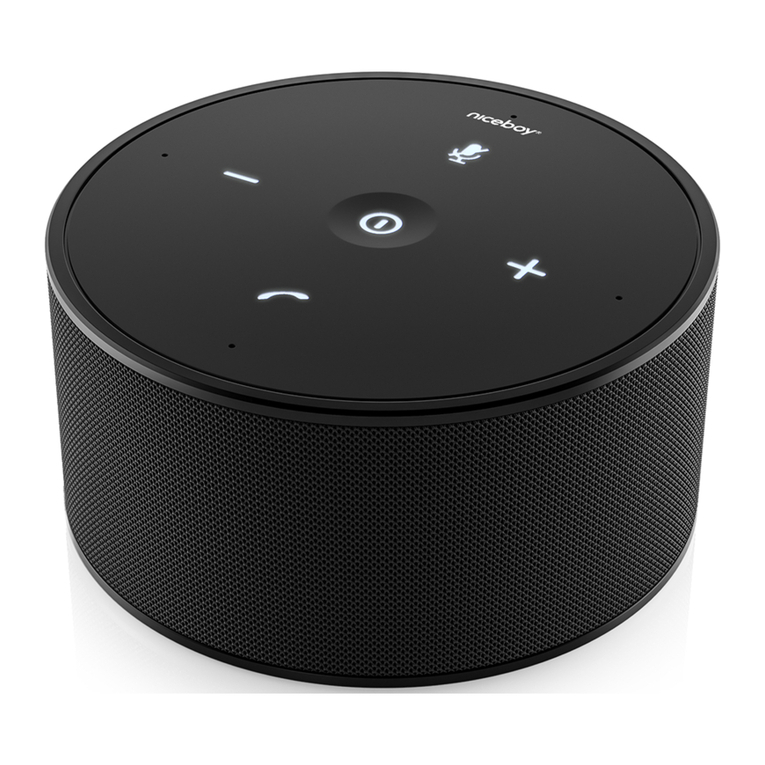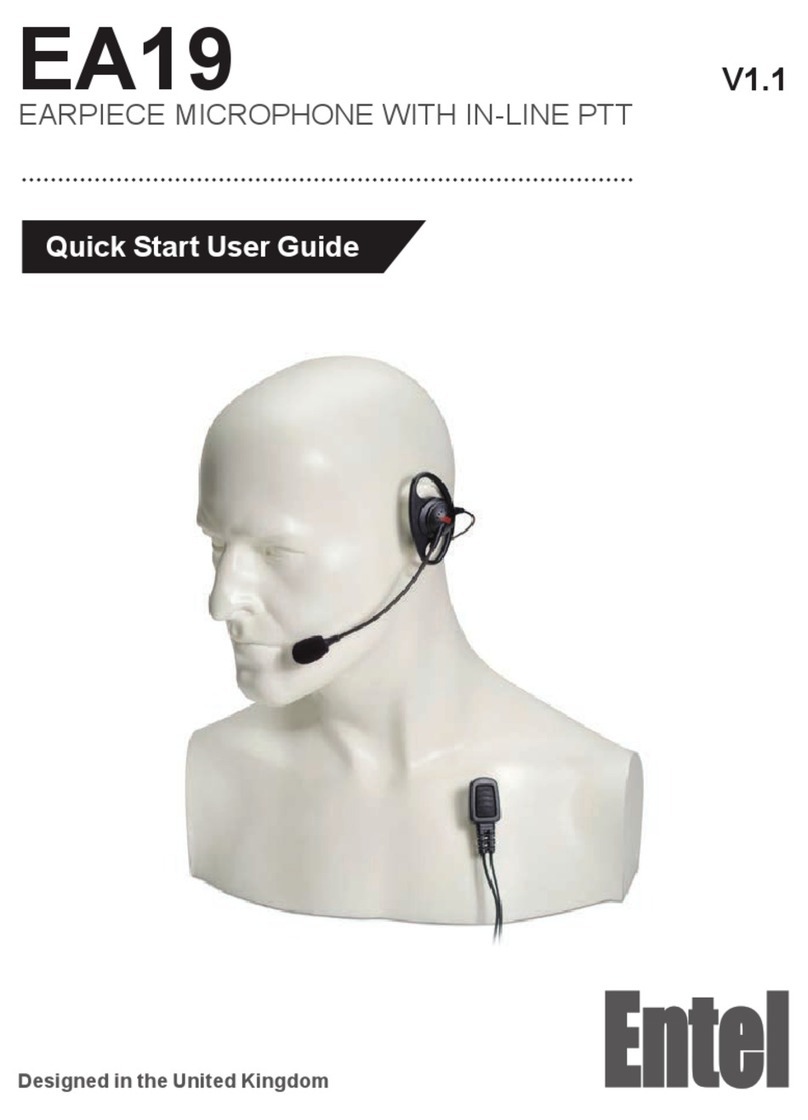Blue Robbie User manual

Included Accessories:
•Cherrywood storage box
•Gold-accented shockmount
Recommended Optional Accessories:
•
The Pop
(brass mesh pop filter)
•
Kiwi, Cranberry
or
Blueberry
high-definition mic cable
•Robbie the Mic Pre
Class-A vacuum tube mic preamplifier
Blue Microphones
5706 Corsa Avenue, Suite 102
Westlake Village, CA 91362
www.bluemic.com
Step up to the mic.
TM
®
Warranty
This Microphone or related part is warranted under the conditions outlined below to its original,
registered owner, provided the purchase was made from an authorized Baltic Latvian Universal
Electronics (BLUE) dealer. This Microphone or related part is guaranteed to remain free from
operating defects for three years from the date of purchase. In the event that service is
required, all necessary parts and labor will be furnished free of charge during this period except
for tubes, which are guaranteed for 90 days against defects. This warranty is void if the serial
number has been altered, removed or defaced. The warranty is void if the equipment is altered,
misused, mishandled, maladjusted, or is serviced by any parties not authorized by Baltic Latvian
Universal Electronics (BLUE). The warranty does not include transportation costs incurred
because of the need for service unless arranged for in advance. Baltic Latvian Universal
Electronics (BLUE) reserves the right to make changes in design and improve upon its products
without obligation to install these improvements in any of its products previously manufactured.
This warranty is in lieu of any or all expressed or implied.
In keeping with our policy of continued product improvement, Baltic Latvian Universal Electronics (BLUE) reserves
the right to alter specifications without prior notice.
©2007 Blue Microphones. All rights reserved.
Blue Microphones, The Woodpecker, Robbie the Mic Pre, The Shock,
and
Blueberry, Cranberry
&
Kiwi Cables
are trademarks or registered trademarks of Blue Microphones, Inc. All
other trademarks contained herein are the property of their respective owners.
bluemicrophones
woodpecker
phantom powered ribbonmicrophone
TM

Congratulations on your purchase of Blue’s Woodpecker
microphone, a modern classic made the old-fashioned
way— without compromise. The Woodpecker’s gorgeous
wood finish and unique active circuitry make the it one
of the most interesting and beautiful microphones
you’ll ever lay eyes or
ears
on. Beneath the luxurious
exterior, you’ll find that the Woodpecker is a precision-
crafted recording tool, combining the low noise and superb
detail of our Class-A discrete handmade electronics
with the bold, larger-than-life smooth, intimate sound
of our handcrafted aluminum ribbon pressure-gradient
transducer. After just one listen, you’ll realize that the
Woodpecker is a cut (or a peck!) above other ribbon mics
in its class.
In order to familiarize yourself with the Woodpecker’s specialized and
unique features, please take the time to read this manual, and be sure
to try the suggested recording tips.
The Woodpecker was designed to provide the smooth, intimate sound
associated with the most sought-after (and expensive) vintage ribbon
microphones. With its focused mid-range and outstanding bass response, the
Woodpecker captures the essence of any recorded sound. The Woodpecker
also excels at ambient recording, capturing room tone with the most
intimate detail — whether for rock drums, guitars or vocals — any
application where some natural space in the recording is desired.
To get the most out of this, or any
quality microphone, it is essential to
pair it with a good microphone pream-
plifier. Most professional recordists
prefer to have outboard preamps on
hand, and will choose solid-state or
vacuum tube models based on their
unique characteristics. To maintain
the integrity of your signal, try using
Blue’s
Cranberry, Blueberry
or
Kiwi
high-definition mic cable along with
Blue’s outstanding Class-A vacuum tube mic preamp,
Robbie.
And,
whenever possible, connect your pre’s output directly to your recorder or
A/D converter, bypassing the mixing board and any unnecessary compo-
nents. The Woodpecker also includes a custom-designed gold-accented
shockmount to isolate the transducer from the recording environment
and reduce unwanted low-frequency resonance or rumble.
The Woodpecker with
Robbie the Mic Pre

The Woodpecker requires 48 volt phantom power, which is standard
with most mic preamps, mixing consoles, or separate phantom power
supplies. It is important to note that some units, though rated at 48 volts,
may supply insufficient or unstable phantom power, which can result in
distortion and/or degraded performance when used with the Woodpecker.
To avoid damage to audio components when connecting phantom power,
follow this simple procedure: 1) Turn down the mic preamp gain, head-
phones, and your studio monitors; 2) Connect microphone cable to the
Woodpecker and microphone input jack; 3) Turn on phantom power; 4)
Turn up the mic preamp gain, etc. To disconnect or re-route the
Woodpecker: 1) Turn down the mic preamp gain, headphones, and your
studio monitors; 2) Turn off phantom power and wait ten seconds before
disconnecting the mic.
As a pressure-gradient ribbon microphone, the Woodpecker exhibits a
bidirectional, or “figure-8” polar pattern. This means that the
Woodpecker will respond equally to on-axis sounds arriving at either the
front or rear of the mic with nearly 100% rejection of sounds arriving at
either “null point” (90° off-axis).
As with any microphone, we recommend experimenting with placement
in front of the various sound sources you wish to record. Chances are, if
the mic sounds good to your ears, it’ll sound good to everyone else’s,
but we certainly encourage trying out different placement scenarios in
order to achieve that “perfect” sound. Below are some of the recording
tips that we’ve found useful over our many years of studio experience.
Vocals
Here’s a little-known secret — vocalists love singing into unique and
impressive mics. And in addition to its good looks, the
Woodpecker was developed especially to enhance the
midrange and detail in any voice, while enhancing the
proximity-induced lows. The Woodpecker is also an out-
standing choice for narration and voiceover work. When
recording vocals, always use a pop filter like the Blue’s
The Pop
to min-
imize plosive sounds and to protect the ribbon from moisture.
Acoustic Guitar
Ribbon mics require careful placement when used on acoustic guitar,
but the detail and superb response of the Woodpecker are well-suited to
this job. For a balanced sound with a little extra high end,
position the microphone facing the neck, right where it
joins the body (usually around the 12th — 14th frets). For
starters, keep the mic as close as possible, and tilt the
grille toward the soundhole to capture a blend of low end
and pick sound. If you need more lows, move the microphone closer to
the soundhole. For more high end detail, move the Woodpecker farther
from the guitar, either at the same neck position or above the instru-
ment up by the guitarist’s head.
Electric Guitar
The Woodpecker is an excellent mic for any clean amp sound, ranging
from bright rhythm chords to warm jazzy tones. Rotate
the grille toward the center of the speaker to capture
more highs, or turn the capsule toward the edge of the
cone for a fuller sound with more low end. For overdriven
or distorted tones, move the mic towards the outer edge
of the cone, or back it away from the amp a foot or more to add a little
room sound and soften the extreme high end.
Drums
For kit and hand drums, begin by placing the microphone two to four
inches above the rim or hoop (where the head is secured
to the shell). Angle the capsule toward the player’s stick
or hand to pick up more attack and definition. Turning the
capsule toward the shell will soften the sharp attack of a
hand drum, or pick up more of the bright, crackling buzz
from a snare. Moving the microphone closer to a drum generally
increases the low end, shell resonance and separation from other sound
sources, while more distant placement emphasizes the interaction of
the drum and the environment, producing a blended, airier sound.
Polar & Frequency Response Charts
These frequency charts are only a
beginning. It gives the recordist a
basis of the sound provided. How the
microphone reacts in a particular
application will differ greatly because
of many variables. Room acoustics,
distance from sound source (prox-
imity), tuning of the instrument and
mic cabling are only a few of the
interacting issues. For an artist or an
engineer, how the microphones are
used creates the basis of the sound.

Percussion
On tambourine, shaker, bells, clave, and orchestral percussion, the
Woodpecker offers astounding clarity and realism. And
unlike most large diaphragm microphones, the
Woodpecker can be positioned quite close to a percussive
source without distortion or undue proximity effect. Start
by placing the microphone about a foot from percussive
instruments. Moving the mic closer will emphasize detail and tone, as
well as decreasing the proportion of ambient room sound on a track.
More distant placement will yield a natural, roomy sound that blends
easily with other rhythm instruments.
Care and Feeding
Your Woodpecker’s luxurious wood finish requires very little mainte-
nance. You may wish to occasionally wipe the exterior wood surface
with a damp cloth to keep it clean. Additionally, we recommend a mild
furniture polish sprayed onto a cloth and gently applied by hand to the
wood surface and the cherrywood storage box. DO NOT SPRAY ANY
SUBSTANCE DIRECTLY ONTO THE MIC SO AS TO AVOID ANY CON-
TACT WITH THE RIBBON! With proper care and maintenance, your
Woodpecker will last a lifetime. Enjoy!
It’s Organic!
Because the Woodpecker’s exterior is genuine wood, no two will be alike!
A high degree of variability in woodgrain patterns means
that Woodpeckers may differ greatly from one another,
and may not look exactly like the ones shown in the man-
ual. So enjoy your particular Woodpecker — there’s not
another one exactly like it in the world!
Acoustical Operating Principal:
Pressure Gradient
Directional Pattern:
Figure 8, Bidirectional
Frequency Response:
20Hz — 20kHz
Sensitivity (1kHz into 2.5kΩ):
26mV/Pa
Rated Impedance:
50
Ω
Rated Load Impedance:
Not less than 1k
Ω
Noise Level A-weighted (IEC 651):
Not more than 22dB
Max Output (1% THD into 2.5kΩ):
10dBU = 2.5V
Max SPL (0.5% THD into 2.5kΩ):
136dB
Dynamic Range (2.5kΩload):
114dB
Supply Voltage (IEC 268-15):
+48V Phantom Power (+35V min.)
Current Draw (typical ai +48V):
2.4mA
Weight:
1.6lbs
Technical Specifications
Other manuals for Robbie
1
This manual suits for next models
5
Other Blue Microphone manuals
Popular Microphone manuals by other brands
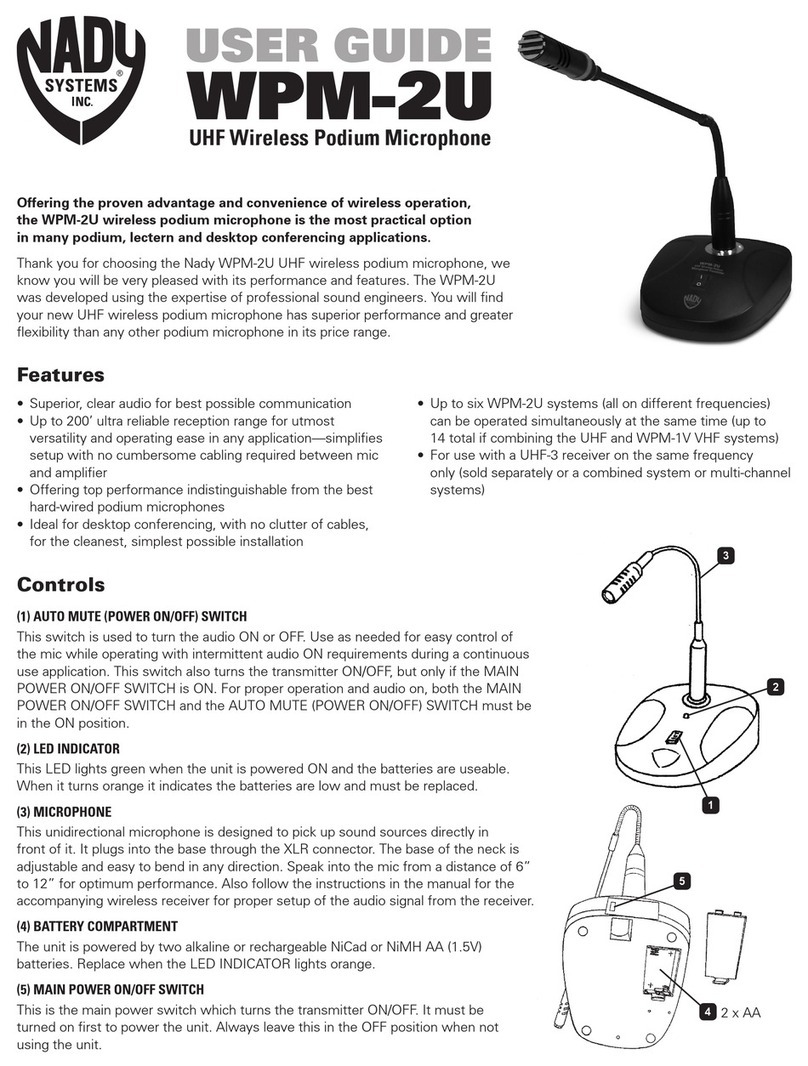
Nady Systems
Nady Systems WPM-2U User giude
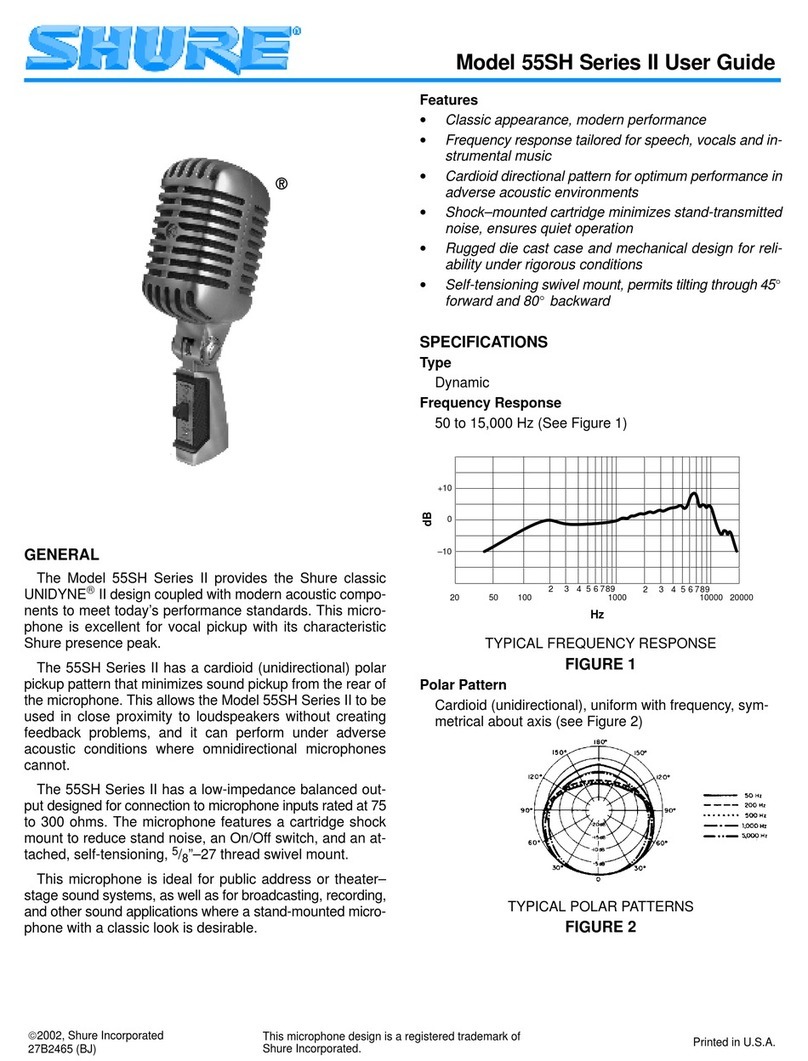
Shure
Shure 55SH Series II user guide
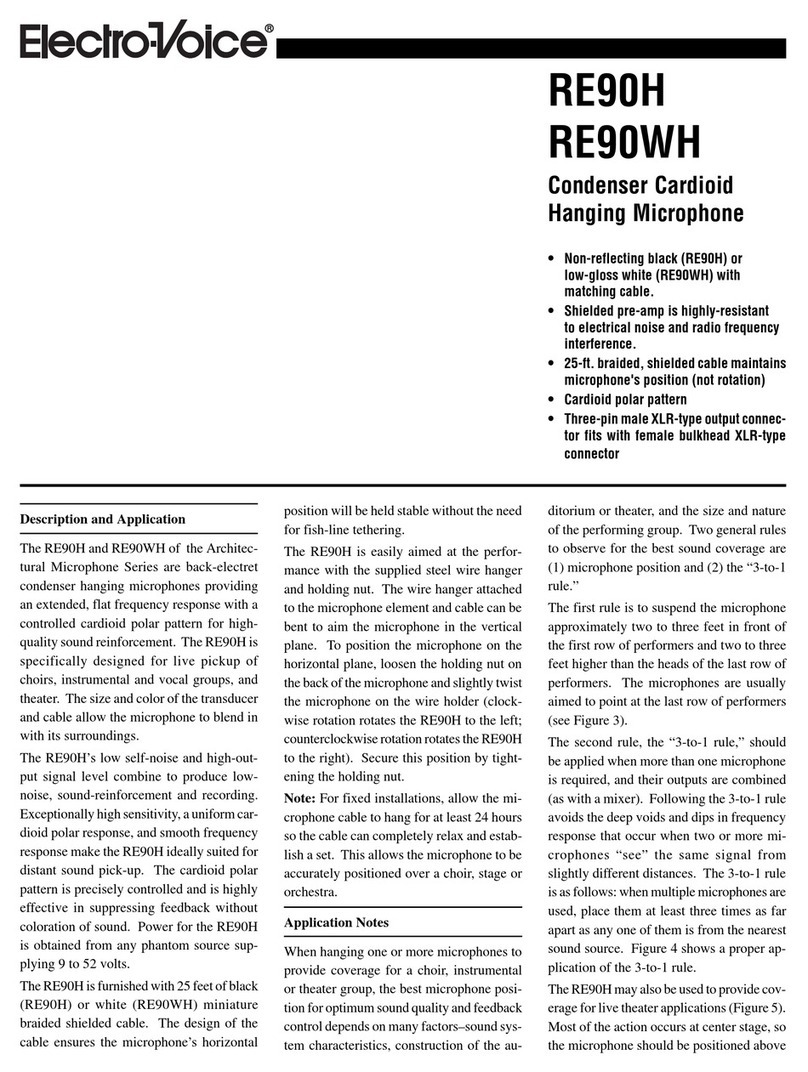
Electro-Voice
Electro-Voice RE90H Specifications

Louroe Electronics
Louroe Electronics VERIFACT D Installation and operating instructions
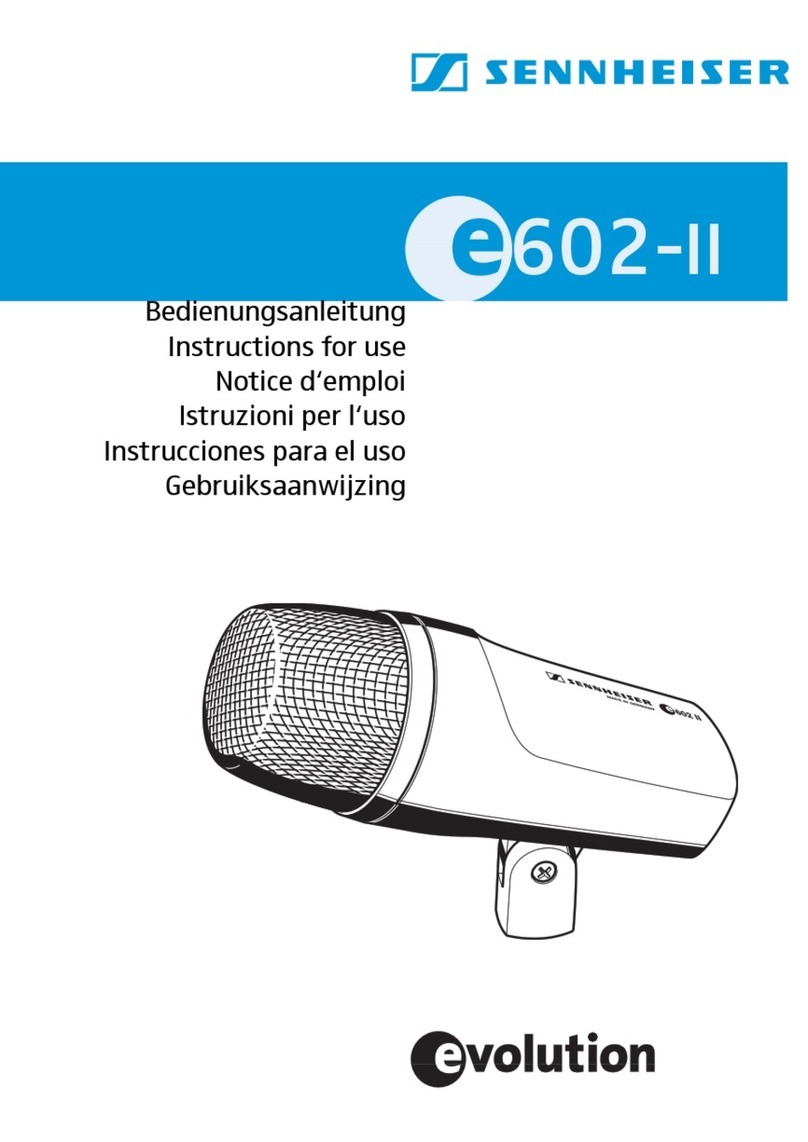
Sennheiser
Sennheiser Evolution E 602-II Instructions for use
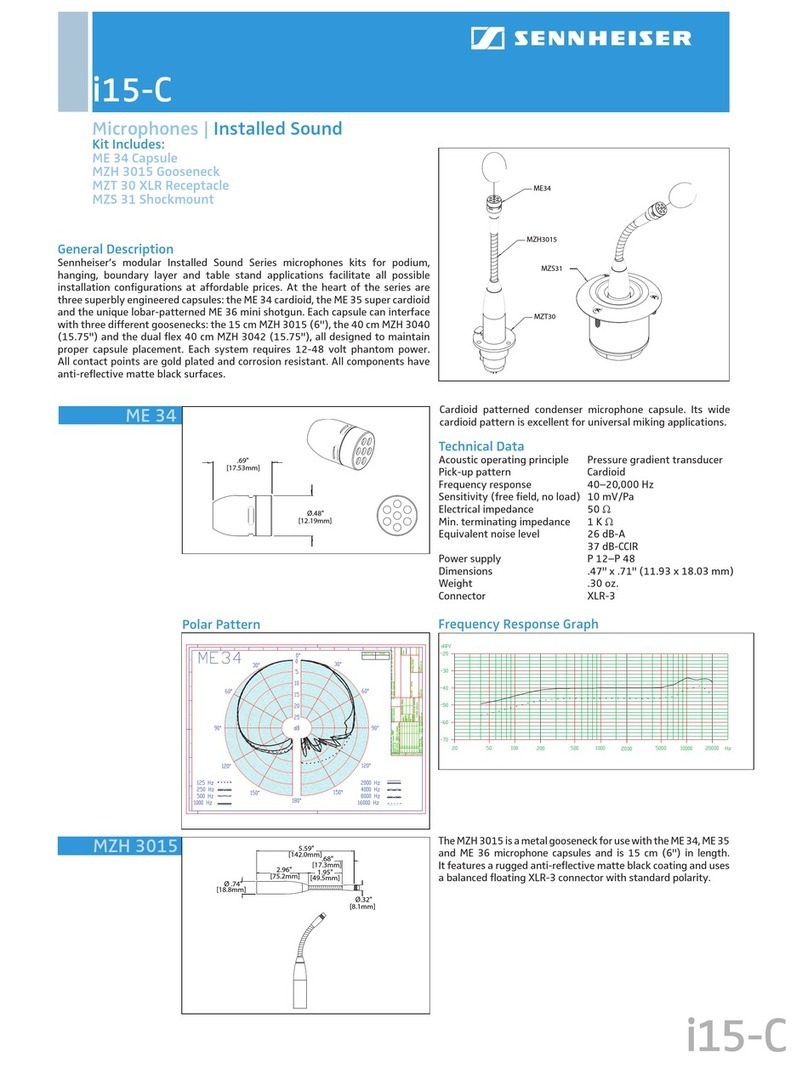
Sennheiser
Sennheiser ME 34 Product sheet
